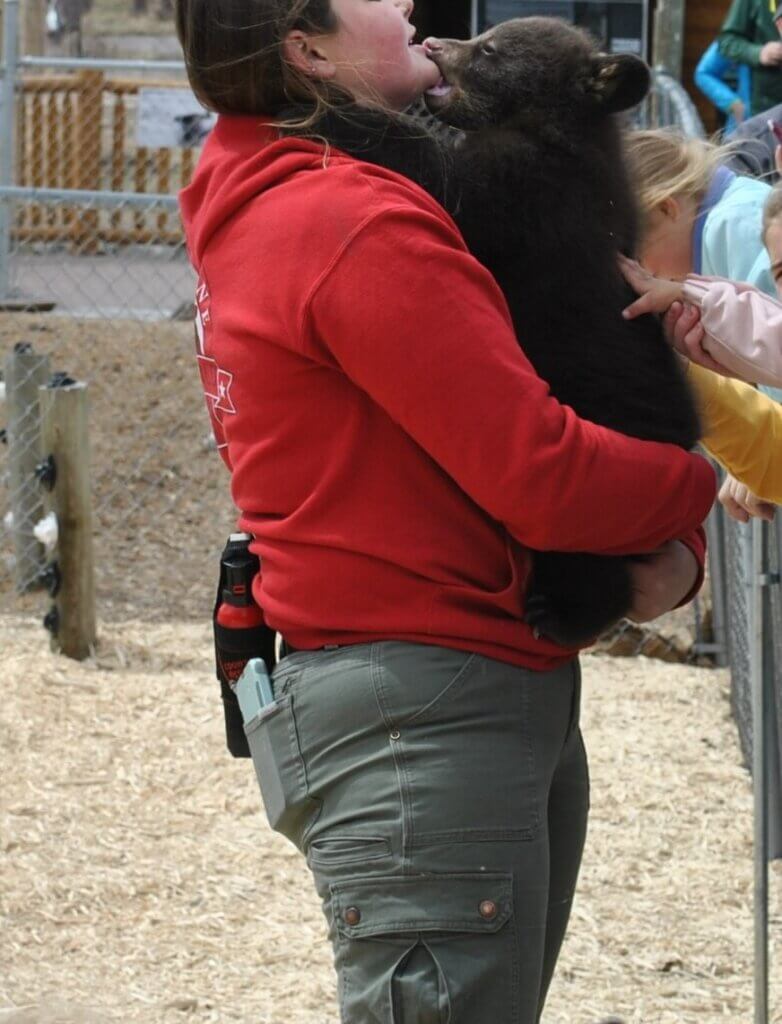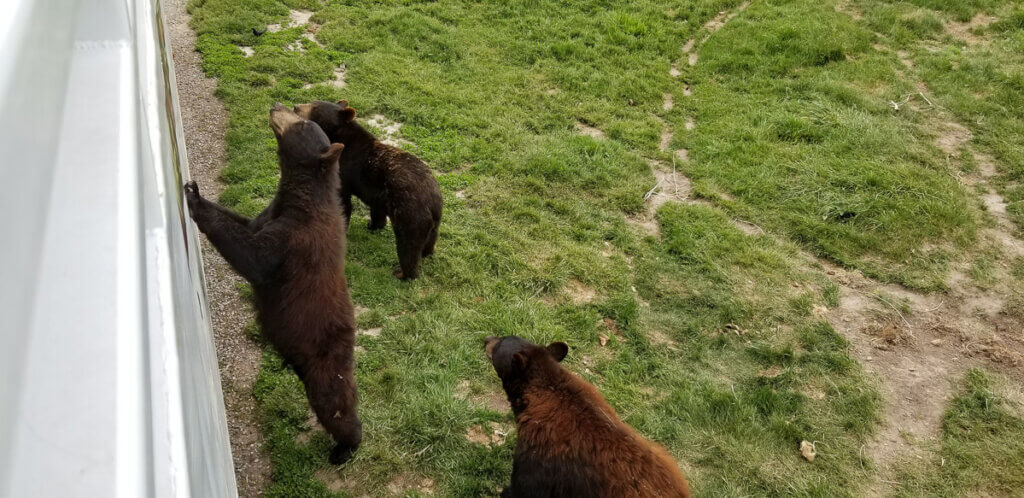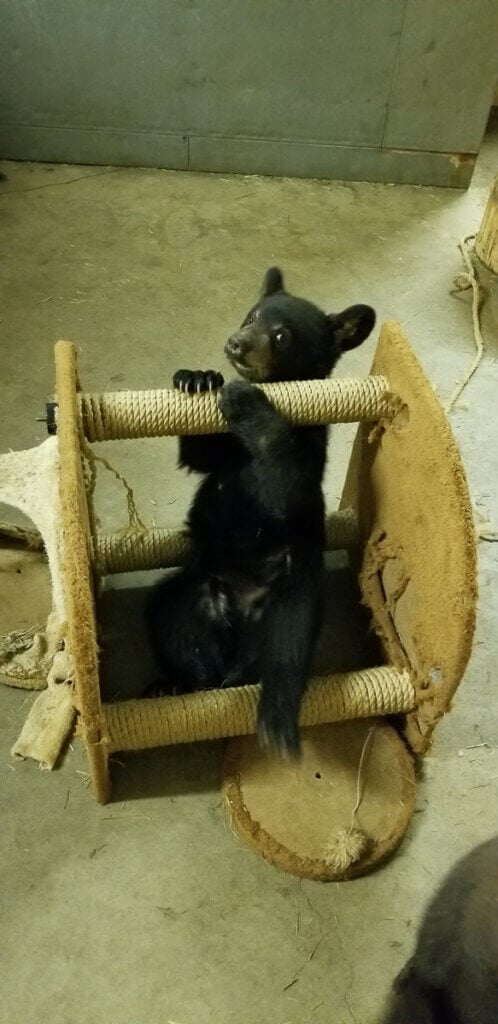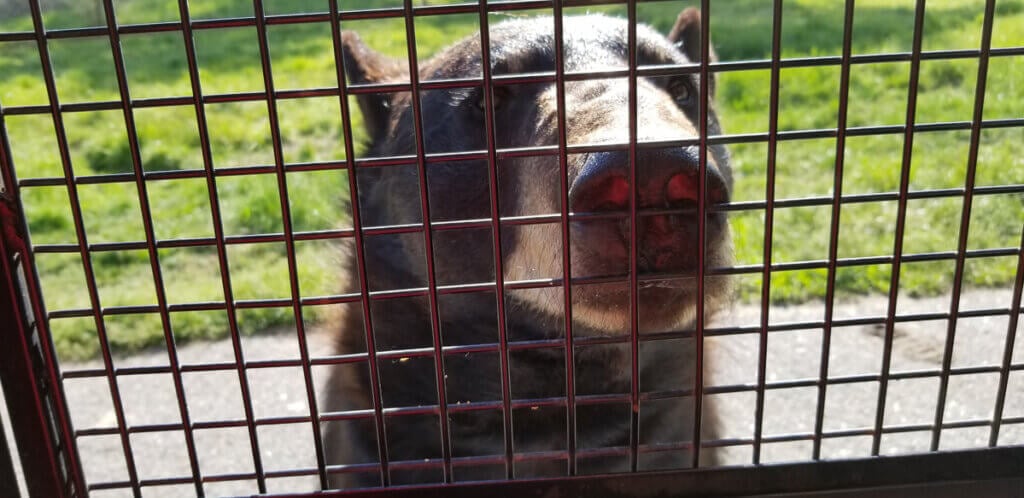PETA Complaint Prompts OSHA Penalty Against Yellowstone Bear World
Update (March 16, 2023): As a direct result of PETA’s investigation, the federal Occupational Safety and Health Administration (OSHA) has fined Yellowstone Bear World for two serious violations. OSHA found that the facility had put its employees at risk of potential attacks from bears and exposed employees to hazardous chemicals in the form of bear spray, without providing them with proper training or protocols. OSHA designated both violations as “serious,” meaning the hazards were likely to result in significant physical harm or even death. After the agency proposed an initial penalty of $8,928, Yellowstone Bear World agreed to pay $6,250 to settle the case.
In 2022, a PETA investigator worked undercover at Yellowstone Bear World—a bear-breeding facility located in Rexburg, Idaho—and documented that a cub with a broken leg was denied prescribed treatment, traumatized cubs were desperate for their mothers, and an irate supervisor threatened to throw one of the vulnerable cubs across the room and rip out her teeth.
In their natural forest habitat, bears are curious, energetic, and on the move for most of the day, spending time foraging for a wide variety of foods and digging in the soft earth, underbrush, and leaves. Normally, black bear cubs spend up to two years by their mother’s side, growing and learning how to survive. But at Yellowstone Bear World, workers separate mother bears from their cubs by the time the babies are only 8 weeks old. Everything that gives their lives meaning is taken from them.

What’s Wrong With Cub-Petting Encounters at Yellowstone Bear World?
Bear cubs at Yellowstone Bear World are used in photo ops and in bottle-feeding “encounters,” during which they’re handled and fed by around 12 customers a day. PETA’s investigator observed that cubs tried to nurse on the chins, necks, fingers, and arms of staff—a displaced suckling behavior often seen in animals who are attempting to soothe themselves after suffering through the trauma of premature separation from their mothers.

Frantic cubs used in bottle-feeding encounters with the public routinely bit, scratched, and bruised the staff. PETA’s investigator incurred 13 bites, some of which broke the skin. One supervisor lashed out when a cub named Tootsie bit her, threatening to “throw” her across the room and rip out her teeth “one by one.”
Yellowstone Bear World’s bottle-feeding encounters began when the cubs were nearly 5 months old, which, according to the U.S. Department of Agriculture (USDA), made them too large and strong to be used in direct contact with the public.

Bears Deprived of Pain Relief and Appropriate Food, Threatened With Beatings
Pain felt by the bears often seemed to be ignored or dismissed. After one bear cub, Bean, fractured his leg and was limping, a supervisor told workers to withhold his prescription pain medication because, in her view, he was acting as if he wasn’t hurt. One supervisor said that she saw a 26-year-old black bear named Tigger “dragging her body … across the road” but a veterinarian was apparently not called to examine her. And after a member of the public recorded a car driving over the paw of one of the bears, workers apparently chose a bear at random for a veterinarian to examine because they didn’t know which bear had been injured, and they “just had to have the vet come out and look at somebody.”

Grizzly bears are omnivores whose natural diet includes roots, fruits, berries, and grasses as well as fish and other prey, but Yellowstone Bear World staff fed them only meat, bread, and sweets—and then “fasted” them one day a week, giving them only some doughnuts and cookies. Workers told customers that the black bears were fed fruit and vegetables, but the investigator never saw that happen.
PETA’s undercover investigator documented that Yellowstone Bear World workers were instructed to carry sticks into enclosures with yearling and adult bears. When a yearling escaped from an enclosure and was being chased by adult bears, a supervisor told a worker to “beat” any bear who came toward her.

Bred for Profit and Exploitation
One bear cub born unseasonably late was purportedly sent to a “home” in Nebraska because she was “too feisty” for public encounters. However, government records show that she was actually sold to an exotic-animal dealer who is known to have sent bears to slaughter. In the last decade, Yellowstone Bear World has shipped 88 bears to this dealer, including four cubs in 2022.

While bears are the main victims at Yellowstone Bear World, the facility also put other animals at risk during PETA’s investigation:
-
- A Rocky Mountain goat apparently died shortly after undergoing an emergency C-section because she was having trouble delivering a stillborn kid. Staff admitted that they didn’t know the goat was in labor and that if they had realized sooner, she would have had a better chance of surviving.
-
- A deer, Daisy, gave birth to four fawns, two of whom were stillborn and one of whom died the next day. A worker said that the previous year, two of Daisy’s three fawns also died, yet staff continued to breed her anyway.
PETA has submitted evidence of apparent violations to multiple regulatory agencies:
-
- The Occupational Safety and Health Administration because of dangerous workplace hazards, i.e., allowing staff to enter enclosures and have direct contact with adult bears and to be regularly bitten by cubs
-
- The USDA because of apparent violations of the federal Animal Welfare Act, including failing to provide adequate veterinary care, using sticks to manage bears and threatening physical abuse, and allowing the public to have direct contact with cubs over 4 months of age
-
- Idaho Fish and Game because of apparent violations of state law, i.e., failing to remove injured animals from public display, feeding bears inappropriate diets, and allowing unlawful, dangerous public feeding

Take Action for Cubs at Yellowstone Bear World
Please call on Yellowstone Bear World to stop breeding bears and to end cub photo ops and other public encounters.
Send polite comments to:
Courtney Ferguson
President and Co-Owner
[email protected]
Please urge Yellowstone Bear World’s remaining promoters not to support
the roadside zoo in the future.
Send polite comments to:
Website Managers at Rexburg Online
[email protected]
208-754-5441
